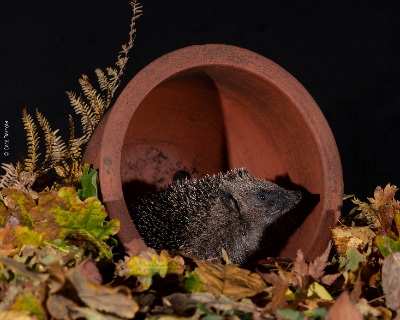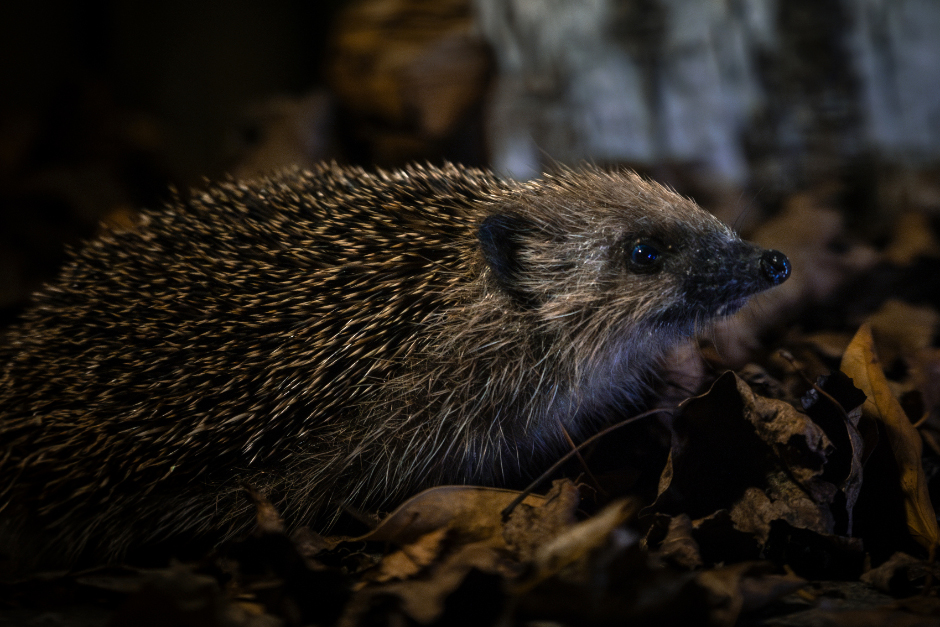Hedgehog-friendly gardening
Ten ways to help hedgehogs in your garden, from gardening safely to attracting hedgehogs with food and habitat
Despite being one of Britain’s best-loved mammals, hedgehogs are in alarming decline and need our help. Nearly half of the UK population has been lost in just 13 years. Previously a widespread garden visitor, this nocturnal
- Are there hedgehogs in my area? View interactive map
To make your garden hedgehog-friendly, the first step is to remove any hazards and ensure tasks such as strimming are carried out in a hedgehog-aware way. Once you have a safe environment, there are several ways you can attract hedgehogs into your garden to support and enjoy these adorable mammals.
How to make your garden safe for hedgehogs
1. Always check before strimming
Always check the whole area carefully before strimming, and cut long grass with care. Strimmers are one of the biggest causes of fatal or severely injuring hedgehog accidents, so even if you haven’t noticed hedgehogs in your garden, always check thoroughly before cutting long grass. Be aware that this habitat can also be full of other creatures such as amphibians and smaller mammals.
If you have a robotic mower, check with the manufacturer that it has good safety precautions for preventing injury to hedgehogs. Find out more
Hedgehogs also like to take refuge in
While hedgehogs are good swimmers, they will tire if they can’t find an escape. Fix a wildlife ramp into any steep-sided garden ponds so that hedgehogs can clamber to safety if they fall in. Also cover any drains with lids, and fit any steep-sided holes with a ramp to prevent these short-legged mammals from falling into a trap.
3. Be bonfire aware
A bonfire pile seems like a five star hotel for a hibernating hedgehog, as well as attracting other wildlife such as frogs and newts. There are many more environmentally friendly ways of repurposing garden waste, including making habitat piles and dead hedges, which themselves are fantastic habitat for hedgehogs. Why not use your material to create a permanent safe home for them instead?
However, if you do decide to have a bonfire, wait until just before lighting to make the bonfire pile, or deconstruct, move and reconstruct the pile prior to lighting, checking through carefully for any sleepy hedgehogs. Then light from just one corner to give any remaining small wildlife an escape route.
Keen to find the cosiest spot, hedgehogs will gravitate towards the centre of the pile at the base. Once the pile is lit, smoke quickly disorientates a sleepy hedgehog and hides the way out, preventing its escape. To make matters worse, a hedgehog’s danger response is not to flee but to curl up into a ball – so it’s crucial to ensure you’ve combed through all the material before you light.
Speak to local Bonfire Night event organisers to make sure they’re doing the same.
Do a litter loop of your garden, removing any potential hazards that can entangle or ensnare hedgehogs and other wildlife. Loose plastic netting, old plastic compost bags and bailer
5. Avoid slug pellets
Dig around in the back of the garage or shed to make sure you don’t have any old metadehyde-based slug pellets lurking there. These are now banned due to their high toxicity to wildlife, so must be disposed of safely at your nearest recycling centre.
Slugs and snails have many benefits in the garden, so it’s best to tolerate a level of damage by the minority species that do feed on live plants. Though not a mainstream food source, they may sometimes be consumed by hedgehogs if there is little else available. In this event, any toxicity from slug pellets present in the slugs or snails would be passed on.
How to attract hedgehogs into your garden
1. Make a hedgehog highway
Hedgehogs roam up to 2km each night in search of food, shelter and mates, but gardens need to be connected to enable safe passage. Get pally with your neighbours to create a ‘hedgehog highway’, making CD-sized holes at the base of fences between gardens to allow hedgehogs to move freely around your neighbourhood.
A constant supply of clean, fresh water is invaluable for many garden visitors, including hedgehogs. Put out a shallow bowl of water in your garden all year round and make sure to keep this topped up during hot weather – hedgehogs get just as thirsty as birds, but can’t source water so easily.
3. Leave some habitat
Build a pile of logs, twigs or leaves to create a larder of juicy grubs and beetles, the perfect menu items for hedgehogs. Hedgehogs are also more likely to be found in gardens that have compost heaps.
Plant hedges in place of fences to provide cover for hedgehogs and other animals who can shelter underneath. Hedgehog – it’s in the name!
Promoting a diversity of plants, particularly British natives such as hawthorn, blackthorn, dog rose and honeysuckle, not only benefits wider
Cate-Barrow-400x320.jpg?width=480)
Christopher-Morgan-940x627.jpg?width=940&height=627&ext=.jpg)
